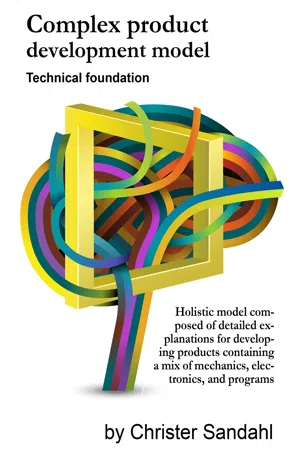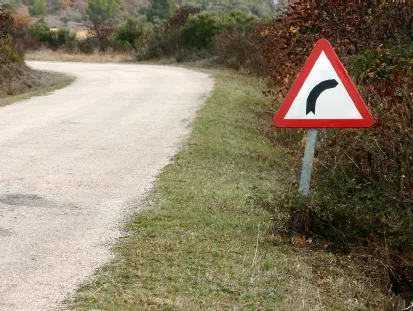![]()
You do not understand how lucky you are until your companions are not at hand anymore.
Impressions for a lifetime
1.1 My technical mentors
During a professional lifetime in product development, I have, of course, had a lot of knowledgeable contacts. It is not humanly possible to enumerate them all here, but some of them have been essential when navigating the crossroads and making decisions for life. The important influences below must be acclaimed.
I cannot enumerate all my excellent contacts, but some important influences must be acclaimed.
Enok Sandahl. This was my grandfather, acting as my second father. He had a small carpentry in Åsafors in the countryside in Småland, where I spent all my free time up to six years of age, and much time during later school holidays. I was the chief designer and he was my carpenter and butler. We built small machines for everything needed in my life, such as a machine for playing with cats, for spanking my little brother, for automatically passing nails when hammering, and so forth. He was old already at that time and is no longer alive.
Kjell Andersson. Kjell is an engineer married to one of my father’s sisters. Every time I met him at family reunions, I jumped up on his knee and discussed engineering until he got tired and almost apathetic. He was more formally educated than my grandfather, so I could discuss even some electronics with him.
Per-Olof Ewers. We met in the Värnamo Gymnasium School. He was an amateur radio operator and constructed his own colossal radio transmitters. I was impressed and started to construct colossal audio amplifiers. At that time all our constructions contained radio tubes, which were fatal for a fumbling teenager, but we obviously had guardian angels. Per-Olof now has his own successful company, helping customers with EMC (electromagnetic compatibility) problems.
Bertil Lindberg and other student friends. At the Chalmers University of Technology in Gothenburg, we were a group of students from the surroundings of the city of Värnamo, who among others constructed electronics. Bertil was always my helpful genius, and we attended many classes and took many labs together.
Ingvar Sandblom. This was a unique bohemian and autodidact from Skillingaryd, the small village where I grew up. He was a radio and television repairman and served customers from the whole Småland province. During my summer vacations, I practiced in his company, and we traveled around and repaired truck communication equipment. Later he became a close friend to me. Unfortunately, he smoked a lot and died of lung cancer.
Erik Dahlbergs Gymnasium colleagues. For a couple of years in the early eighties I was a teacher in electric power and control engineering, and met truly brainy people at this school. I developed an enjoyable intellectual relationship with the crazy and egocentric adventurer Ludvig Bergström, and I worked on a silicon custom design education with the ultradynamic and friendly Anders Lindberg.
Gunnel Sandahl. I met Gunnel during her education in program development at the University in Lund. Apart from sorting out a lot of technical problems together, we fell in love and married, and we now have a sweet family together with our sons Sebastian and Jonathan.
Axis Communication colleagues. I worked at Axis during their startup period in the late eighties, when there were only three development groups. The genius Per Zander worked in the same group as I, and was shockingly skilled in constructing computer boards for complex printers. The Axis manager, Mikael Karlsson, was talented and incredibly promising, but sadly got a fatal cancer some years after I had left Axis. The director for new products, Martin Gren, was a spontaneous genius, which is quite the reverse of my own inclination, and despite our problems in communication, we always aimed to respect each other. At Axis I also met the technician entrepreneur Bernt Böhmer, and together we collected wines of unreal quality, and we still meet for super dinners with special wines and technical discussions.
Q-Labs colleagues. A dynamic Norwegian Geir Fagerhus set up this consultant company during the economically harsh times in Sweden in the nineties. He succeeded in finding dozens of extraordinarily dynamic and skillful people, such as Henrik Cosmo and Anders Gustavsson, to mention two of them. Q-Labs collaborated with many universities and several international product-developing corporations, and used the Capability Maturity Model (CMM) of Bill Curtis at SEI, and the Cleanroom methodology by Harlan Mills in Florida.
Sony Ericsson colleagues. I have been in various positions at Ericsson and Sony Ericsson for more than a dozen years. I began as a mobile phone technical manager under the highly talented Jan Svensson, who afterwards had a long, successful career ending at the absolute top of the development departments of both Ericsson and Sony Ericsson. After some years, I shifted to operational development and together with Mats Pettersson, another talented manager, got the yearly award from the hands of the president, Miles Flint. A great deal of this success was attributable to Jan Sjunnesson, who was the knowledgeable consultant mentor during this period. During my operational development work I met many technical geniuses, such as Even Andre Karlsson and Magnus Augustinsson, to mention some. My ever present social mentor was Per Göran Ohlsson.
Cooperation with the academic world. At many of the companies where I have worked, there was a tight connection with the technical universities. I got to know professor Claes Wohlin during the Q-Labs era; I came in contact with professor Boris Magnusson during Java development at Sony Ericsson; and as operational developer in verification methodology I cooperated with professor Per Runesson.
Thord Sandahl. This is my brother, who has a degree in civil and environmental engineering from Chalmers University of Technology. He is a full-fledged entrepreneur, and is the successful managing director of our large family transportation corporation. He has been indispensable during our Hungary wine production adventure.
Bakó Ambrus. I met this microbiologist in Badacsony in Hungary while setting up our own winery, called Villa Sandahl. He established his own oenology consulting company to assist us, and we have developed some of the best white dry wines produced in Hungary. He is a living lexicon and has answers to almost anything one may want to know. He is now replaced with the worthy successor Palkó Zsolt. We also had invaluable help from wine producer Fabien Stirn in Alsace.
1.2 The author
Christer Sandahl. I was born and grew up in the Gnosjö area, the well-known region of entrepreneurship in Småland in southern Sweden. My family holds a large transportation company, which was founded by my grandfather, expanded by my father, and is now managed by my brother.
I have been a passionate engineer for over 40 years. Beginning with photo and chemistry labs in my early teenage years, to electrical engineering at the university, and computer and program design as a professional.
Several times in my early career, I constructed large computer systems all by myself, including mechanics, electronics, and programs. When computers grew larger and complex, for long periods I managed programming groups in successful local companies, as well as in large worldwide corporations, such as Axis Communications, Ericsson, and Sony Ericsson.
I also manage my brother's and my winery in Hungary, which nowadays is considered to be a quality breakthrough in Hungary's dry white wine production.
I have always been an engineer in the front lines of technology, and although I am very fond of management matters, I have not jumped into a formal career to get more and more people under me. Neither am I an academic longing for a formal scientific career, presenting an impressive list of references to show my formal education. This book is more a collection of unique and creative ideas from long experience in combination with curiosity about theories in technical and methodology fields. To conclude, I am an artist in technology, loving to express myself.
![]()
| CHAPTER 2 | Reveal background |
“There is a lot of noise in the jungle; you must only be aware of the dangerous.”
2.1 What has gone wrong?
Product development is nowadays in many respects an established and ordinary business. For example, house and bridge development are several thousand years of age. Other fields of product development are much younger; for example, dealing with programming began in the 1960s.
However, in all development fields, large numbers of products are still being created which fail to satisfy end users. In some newer fields, such as programming, trouble looks to be the standard. For example, the editor I use to write this book has crashed over 200 times and caused me several weeks of extra work. And note, there is no conspiracy behind this—no supplier likes to disappoint an end user. So what is the problem?
Digging deeper into the development topic in order to find the root cause of why products fail to satisfy end users, reveals the most common reason to be an exploding number of market opportunities and technical possibilities, which in turn causes competency and growth problems when organizing development of related products.
Uncontrolled complexity is likely to emerge when a business is forced to scale up.
Two thousand years ago, the Pantheon building in Rome was the ultimate complex building construction at the very edge of development knowledge at that time, but it would nowadays be a rather modest target for a midsized construction company. A complex building of today is a skyscraper many hundred meters high, which needs high-tech solutions and sophisticated calculations for strength of construction materials, and hundreds of workers within many disciplines who are well organized to erect the building. Complexity of products has increased over time, but so has our ability to cope with greater and greater complexity.
To analyze complexity a bit further, imagine for a given time point the two diametrically opposed ends of prevailing complexity, the “ordinary low end,” and the “extraordinary high end.”
2.1.1 The ordinary low end
Houses have been constructed with success for a very long time. Handy persons (with some drive) can, for example, expand their private house with some new rooms. They may have to contact experts to sort out problems beyond their competency and hire specialists to help them build, but on the whole, this is not too complex for them to lead the design work and to also take part in the craftsmanship. The extended space will b...


